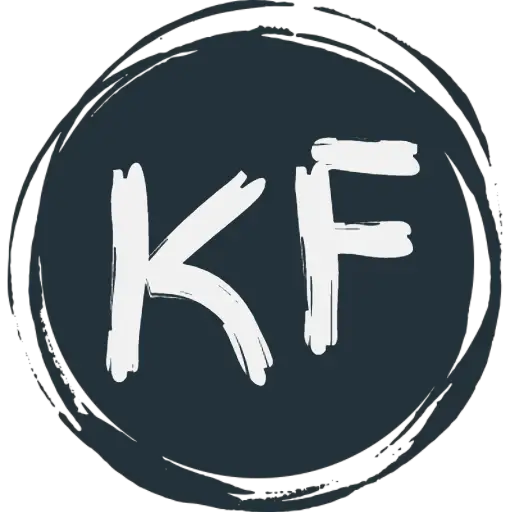Native Americans are an integral part of American Society with rich culture and history dating back to the ice age. Learning about Native Americans is very interesting and kids love to read about them. We have gathered a complete set of “Native American Facts for Kids” that will enable the kids to learn all about Native Americans. You will be able to learn where they came from, their population, where they lived, their history & rights movement, their culture, festivals, clothing, totems, houses, food, religion, gods, symbols, and many more with pictures and videos. Do not forget to share this page with your friends and family.
Native American Facts for Kids
1. What is Native American – Who are Native Americans
- Native Americans are the indigenous people of North and South America.
- Indigenous people means the ethnic groups of people who are the original inhabitants of a particular region.
- In simple words, Native Americans are the people that have been living in America before its discovery by Columbus.
- They have the bloodline of the original people of the north and south America.
- They are the first owners of America.
- They are also known as American Indians, Indigenous Americans, Indian and Alaska Natives.
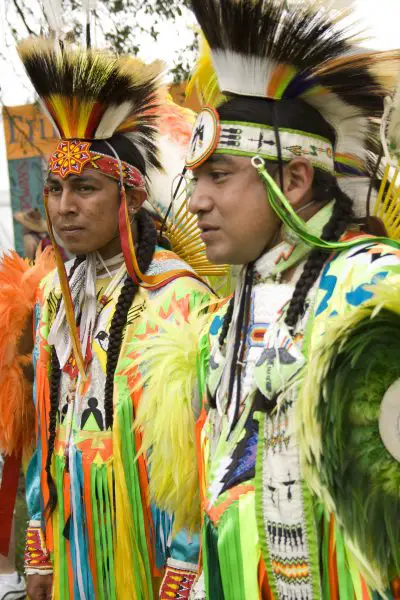
2. When did Native Americans Get to America
- They migrated to America 12000 to 15000 years ago during the ice age from Asia and Europe.
3. How Long have Native Americans been in America
- Native Americans have been in America for at least 12000 years.
4. Where are Native Americans From
- Native Americans are from Asia and Europe.
- They resemble the people of Mongolia, China, and Siberia.
5. How did the Native Americans get to North America
- They crossed over through a land bridge that existed between Asia and America more than 12000 years ago during the ice age.
- This land bridge was called Beringia.
6. How Many Native Americans in the USA – Native American Population
According to the census in 2010
- 5.4 Million native Americans live in the USA.
- The total population is estimated to be 50-100 million.
7. State With Most Native Americans
- California has the largest population of Native Americans in the USA.
- About 362,801 Native Americans live in California.
8. Percentage of Native Americans in the USA
- In 2014, they were about 2 percent of the total population of the USA.
- American Indian and Alaska Native are about 48 percent of the total Native American population while the American Indian and Alaska Native combined with any one or more races are about 52 percent.
9. States Named After Native Americans
|
State Name |
Named After |
Meaning |
| Alabama | Alibamu Indian tribe who were members of the Creek Confederacy | Clears the thicket |
| Alaska | The Native American word “Alakshak” | Peninsula |
| Arizona | Not Known | Small springs |
| Connecticut | Derived from the Native American word “quinnitukg-ut” | At the long tidal river |
| Hawaii | Derived from “Havaiki” or “Hawaiki. | Name of original Polynesian homeland |
| Idaho | Comanche “Idahi”
Shoshone “ee-dah-how” Salmon River Tribe of Indians “Ida” means salmon and “ho” eaters |
“Good Morning” “Salmon eaters”. |
| Illinois | “ilhiniwek” or “illiniwek”. | Illini” meant “man” and “iwek” makes it plural so it means men. |
| Iowa | Ioway Indians. | |
| Kansas | Kansa Indians | |
| Kentucky | Meadowlands
Cane and turkey lands Dark and bloody ground |
|
| Massachusetts | Indian word | About the big hill |
| Michigan | Indian word “Michigama” | Large Lake |
| Minnesota | Dakota Indian word “Minisota” | White water |
| Mississippi | Choctaw word | Great water or Father of Waters |
| Missouri | Town of the large canoes | |
| Nebraska | Oto Indian word | Flatwater |
| New Mexico | Mexico | Place of the Mexica |
| Ohio | Iroquois Indian word | Beautiful |
| Oklahoma | Chocraw word | Red people |
| South and North Dakota | Indian word “Dahkota” | Friends or Allies |
| Tennessee | Cherokee “Tanasi” | “meeting place”, “winding river”, or “river of the great bend”. |
| Texas | Caddo Indian word | Allies |
| Utah | Ute Indian word “Yuta” | People who live high in the mountains |
| Wisconsin | Indian word “Wishkonsing” | Place of the beaver |
| Wyoming | On the Great Plain |
10. Where Do Native Americans Live – Native American States
Major American states where native Americans live are:
- Alaska
- California
- Oklahoma
- Arizona
- Texas
- New York
- New Mexico
- Washington
- North Carolina
- Michigan
- Florida

11. Native American Languages
There are around 800 indigenous languages spoken by Native Americans. The major ones are:
- Navajo(170,000 speakers)
- Yupik
- Sioux
- Apache(10-50k speakers)
- Rio Grand Keresan
- Cherokee(Tsalagi)
- Choctaw
12. Native American Genealogy
- Genealogy is the study of families in which their history and lineages are traced.
- Native Americans use several approaches and sources to discover information about their possible ancestors.
- It includes documentation, records, genetic analysis, collaboration, volunteerism, and genealogy software.
- Bureau of Indian Affairs (BIA) is possibly the largest database of histories and records of Native American tribes.
- There are also several other jurisdictions in the USA, including hospitals, churches, and schools that possess recorded information about native Americans.
13. Native American History
- The Native American’s history began thousands of years ago in ancient times when humans from Asia and Europe traveled via the Bering land bridge into Alaska.
- Their successors explored across the western coastline of North America.
- It is still undetermined when the earliest people arrived in America but some archaeologists believe it was about 12000 BC.
- These people covered almost the whole continent about 1000 BC ago.
- They developed a broad range of civilizations, languages, and traditions during their migration across the continents.
14. Native American Rights
- The rights of the Native Americans are slightly complicated because they have dual citizenship, that is, of the United States and their tribes.
- This special relationship cause tension between rights that Native Americans obtained through tribal sovereignty and rights that the US government give to their citizens.
- The tension was at extreme until the US government granted citizenship to Native Americans through the Indian Citizenship Act in 1924.
- The Voting Rights Act (VRA) of 1965 significantly prohibited race and color discrimination.
- The extension of VRA in 1975 further caused the language minorities to become more secure and assisted.
- In 1968, congress passed the Indian Civil Rights Act (ICRA) in response to the discoveries of abuses by the tribal government.
- ICRA also called the “Indian Bill of Rights”, was an attempt by Congress to protect the civil rights of Native Americans.
- In 1968, the formation of the American Indian Movement (AIM) as a Native American advocacy group brought attention to the issues of living conditions, racism, and treaty rights.
- In 1975, the Indian Self-Determination and Education Assistance Act gave authority to government agencies to make contracts with Indian tribes. The act also authorized the tribes to administer funds.
- In 1978, the American Indian Religious Freedom Act was passed. The basic aim of the act was to preserve and protect the traditional religious rights of Native Americans, Native Hawaiians, Aleuts, and Eskimos.
- The Indian Child Welfare Act was another act passed in 1978. The main purpose of this act was to minimize the interest of tribes in keeping guardianship of their children.

15. Native American Tribes – List of Native American Tribes by Region
- Bureau of Indian Affairs (BIA) of the United States legally recognized 567 Native American Tribes
- Regionally, they are:
- Northeast Tribes
- Northwest Tribes
- Southeast Tribes
- Southwest Tribes
- Plain Indian Tribes
- California Indian Tribes
- Great Basin Tribes
- Plateau Tribes
Southwest Native American Tribes
Major Native American tribes in the southwest region are:
- Navajo tribe
- Pima tribe
- Apache tribe
- Hopi tribe
- Pueblo tribe
- Zuni tribe
- These Native Americans are living in the southwest region of the USA alongside the pacific ocean
- This region includes Arizona, California, Colorado, Nevada, Utah, and Texas.
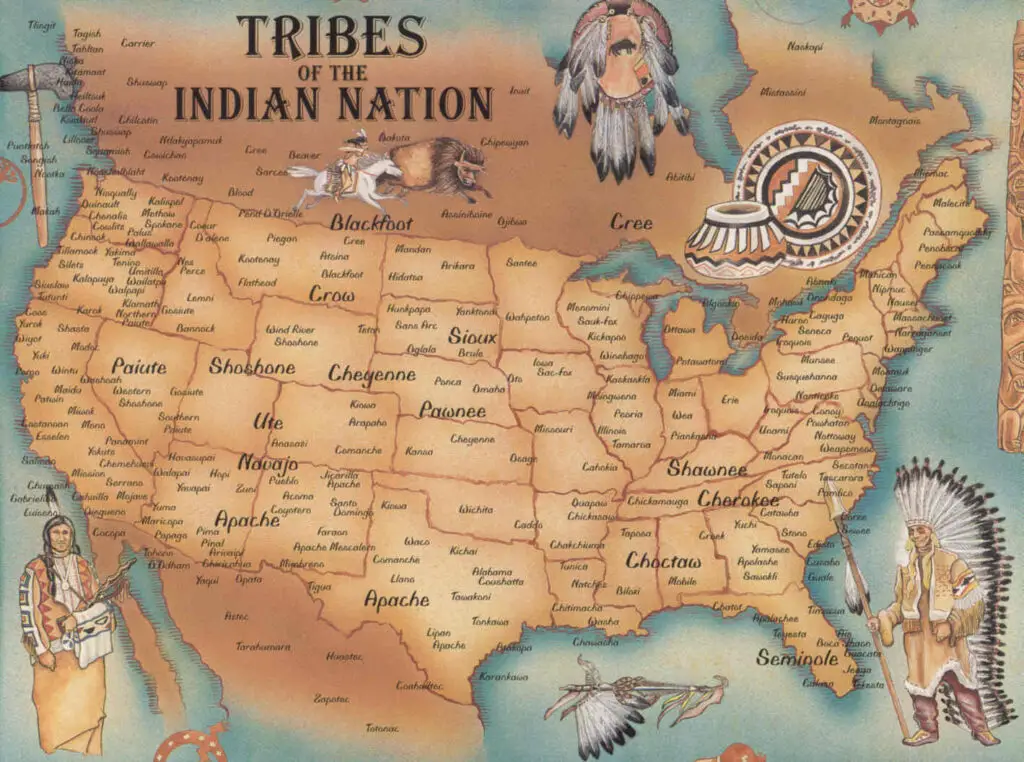
Source: http://www.emersonkent.com/images/maps/native_american_map.jpg
16. Native American Map

17. Native American Totems
- A totem is a sacred object, animal, or symbol that is believed by a particular tribe, group, family, or individual to have spiritual importance.
- Many cultures of the Native Americans believe that every individual is attributed an animal upon a birth time.
- They called them animal totems and it serves as animal spirits for them.
- The major animal birth totems of Native Americans and the properties and abilities to which they are tied are the following:
- Bear Totem, strength, motherhood, loneliness, curiosity, teaching and learning modesty
- Beaver Totem, artistic, creative, builder, determinative, and resourcefulness.
- Deer Totem, kindness, gentleness, healing, nurturing, and compassion.
- Falcon Totem, true visions, and the quest for knowledge
- Otter Totem, feminine power, trusting, inquisitive, speedy, and loyal
- Owl Totem, seeking truth, wisdom, swiftness, and silence, and a night’s creature
- Raven Totem, light’s bringer, knowledge, and creativity
- Salmon Totem, renewal, reliability, and persistence
- Snake Totem, initiation, rebirth, and transformation
- Snow Goose Totem, seeking of spiritual enlightening
- Wolf Totem, leadership, intelligence, strong sense of family care-taking
- Woodpecker Totem, faithfulness, kindness, family and community care-taking
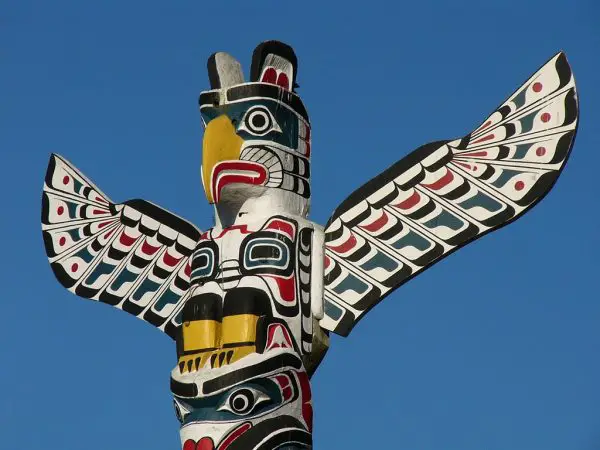
18. Native American Values
Some of the many values that Native American people contribute to mainstream society are:
- Respect for nature
- Inclusion and equality
- Stewardship of children
- Vision quest to lead a purposeful life
19. Native American Culture
- The culture of a particular society means its social behavior and standards.
- All the federally recognized 567 tribes of Native Americans have their own definite cultures.
- The Native American tribes were either Sedentary farmers or Nomadics.
- The sedentary farmers resided in one place and grew crops for food.
- The nomads were moving people in search of buffalo or other animals rich places for hunting.
- Hunting and fighting were almost men’s responsibilities, however, women also took part in wars.
- Painted faces and bodies with symbols were believed to give special power and protection in battle.
- In most tribes, only men were responsible for negotiation with other tribes and enemies.
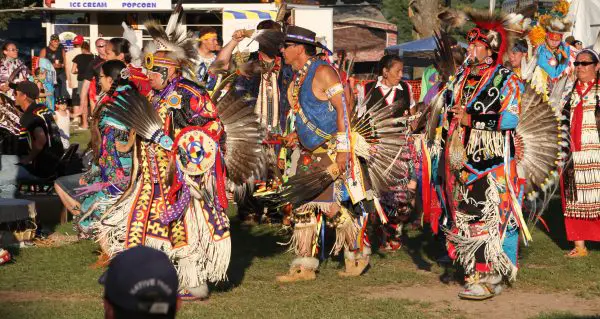
20. Native American Religion
Major religions of the Native Americans are:
- Earth lodge religion
- Ghost dances
- Indian Shaker religion
- Longhouse religion
- Mexicayotl
- Native American church
- Waashat religion
21. Native American Gods
There are seven categories of Native American Gods, of that every individual tribe have their own various and specific ones
- Creator Gods
- Gods of the Dead
- Transformer Gods
- Monster Gods
- Trickster Gods
- Cultural Heroes
- Nature Spirits
22. Native American Traditions – Native American Ceremonies – Native American Rituals
Some of the interesting traditions and ceremonies of Native Americans are:
Death Ceremonies
- Native Americans celebrate death rather than mourning the loss of loved ones.
- They believe death is a new life’s initiation in the Spirit World.
The Green Corn Festival
- It is a religious ceremony as well as a celebration that is celebrated in late summer on the ripening of corn crops.
- It is practiced by Southeastern tribes and Eastern Woodland tribes.
- Healing Rituals are performed in this festival.
- It is a symbolic ceremony that varies from tribe to tribe.
- Today this festival is celebrated in the honor of Native American culture.
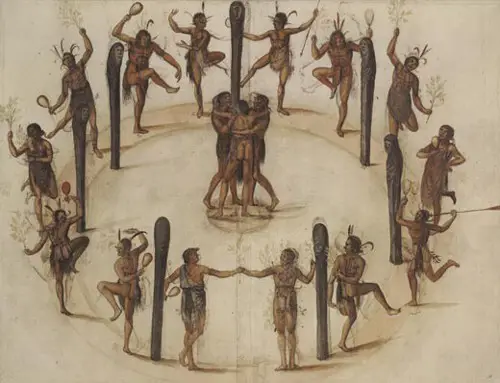
Native American Dance
- Ghost dance
- Sun dance
- Stomp dance
- Rain dance
- Omaha or Grass dance (a modern style of pow wow dance)
Native American Folklores
Folklores are fictional stories without any particular location in space or time. Every Native American tribe has several folklores. Some of them are:
- Origin of the buffalo dance
- How fly saved the river
- The legend of Wountie
- MicMac creation story
- Yellowstone valley and the great flood
- Origin of the Iroquois nation
- California creation lore
- Men visit the sky
- Bear legend
- Warriors of the rainbow
23. Native American Myths
- Myth is a sacred narrative from the past time that may reveal the universe and life’s origin or the moral values of the culture in human terms.
- Myths of Native American people comprise folktales and traditional narratives.
- They believe that everything like ordinary people, animals, plants, and places has a divine spirit. Therefore, Nature is greatly the base of their spiritual narratives and stories.
- In their myths, universal principles hold more importance than individual characteristics.
24. Native American Legends
- Legend means a story about a subject from the past time that is believed to have or had been a historical value
- The subject is usually a king, a popular person, a hero, a saint, or a war
- The legends must have an association with a specific place and time in history
- Some of the Native American legends are:
- The Death Bate (Camazotz)
- The Ice Giant
- The Water-Panther
- The Skin-walker
- The Flying Heads (Kanontsistonties)
- The Ghost-Witch
- The Little Cannibals (Teihiihan)
- The Evil that Devours (Wendigo)
- The Owl-Women
- The Horned Serpent
25. Native American Symbols
Native Americans used various symbols that carried secret meanings. Some of them are:
- Arrow for defense
- Arrowhead for awareness and alertness
- Bear tracks for self-observation and also leadership
- Butterfly for transformation
- Cactus for endurance
- Circles for the cycle of seasons, and life to death to rebirth
- Days and nights for the passing of time
- Dragonfly for happiness
- Earth circle for four nations
- Fire for renewal and purification
- Feathers for honor
- Hand for success in hand to hand fighting
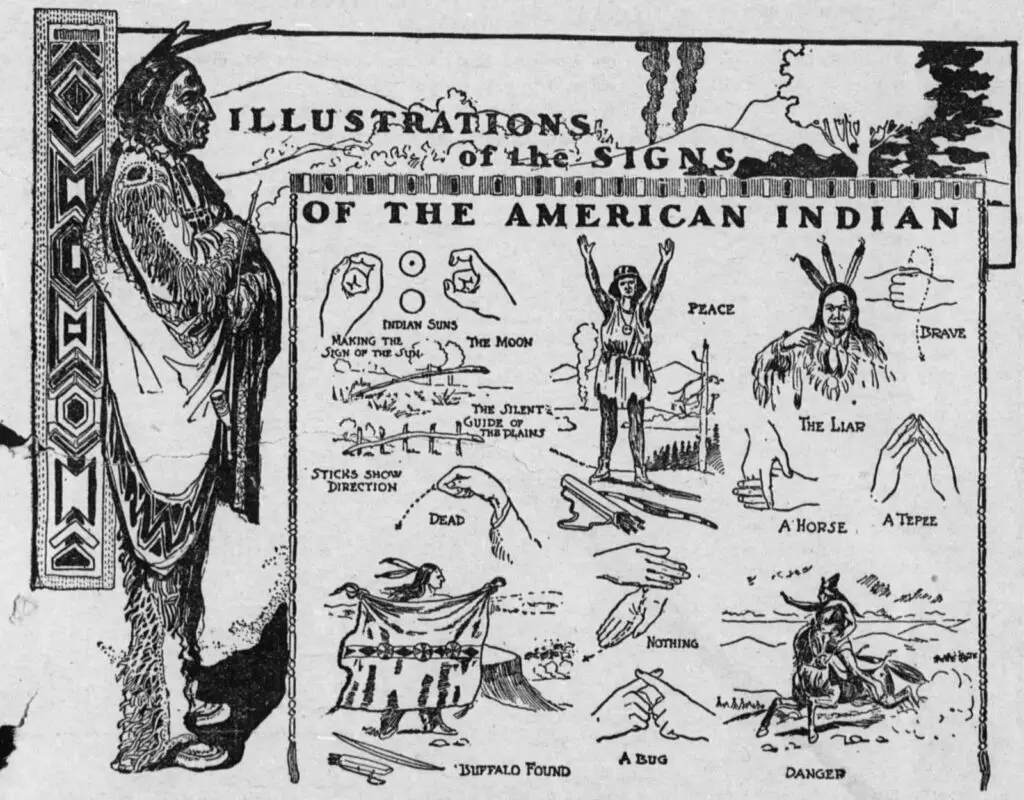
26. Native American Literature
- Native American literature includes books, novels, and a collection of short stories. It also includes journalism and children’s literature.
- Some of the Native American writers wrote to raise voices for changing their people’s political and social status. They also wrote autobiographies about their concerns and experiences.
- Sherman Alexie, Donald Fixico, Simon J. Ortiz are Native American children’s writers.
- Velma Wallis, Leslie Marmon Silko, Louise Erdrich are the most famous Native American women writers.
27. Native American Artifacts
- The artifacts are something made by human beings, usually of archaeological or cultural interest.
- The National Museum of the American Indian (NMAI) contains the most considerable collection of artifacts and arts of Native Americans.
- The collection in NMAI represents over 1,200 indigenous cultures and more than 12,000 years of history.
- It includes about 825,000 items of religious, historical, and aesthetic importance, and also the objects created for daily use.
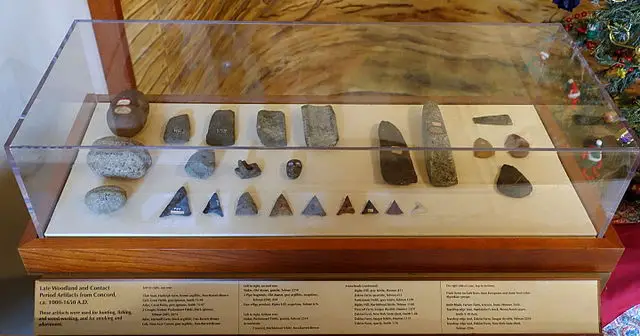
28. Native American Tools
- Tools of Native Americans were made of stone, usually of flintstone.
- They made tools such as axes, tomahawks, knives, spears, and arrows for hunting and fighting purposes.
- They also made other useful implements for clothing, fishing, shelter, decoration, and particularly for transport like travois and canoes.
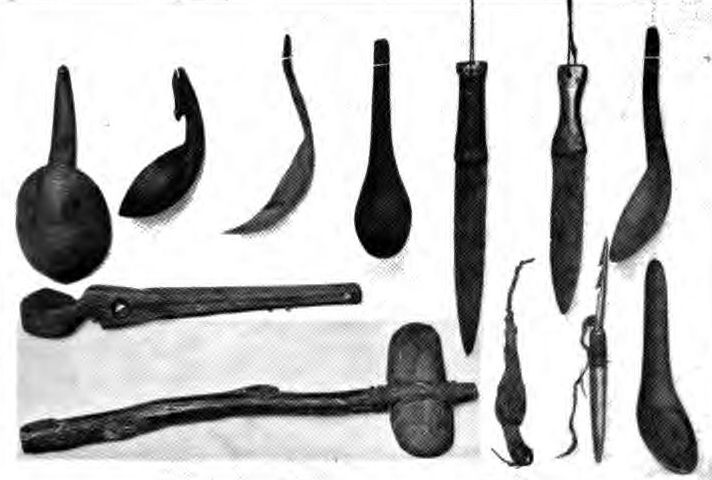
Learn about: Stone Age Tools And Weapons Information
29. Native American Jewelry
- The jewelry of Native Americans is usually made of naturally occurring as well as artificial materials.
- It may be vegetal fibers, hardwood, different metals, gemstones, beadwork, and quillwork.
- They also use animal materials for making jewelry like bones, teeth, and hide.
- The jewelry includes earrings, rings, bracelets, necklaces, wampum, ketohs, labrets, etc.
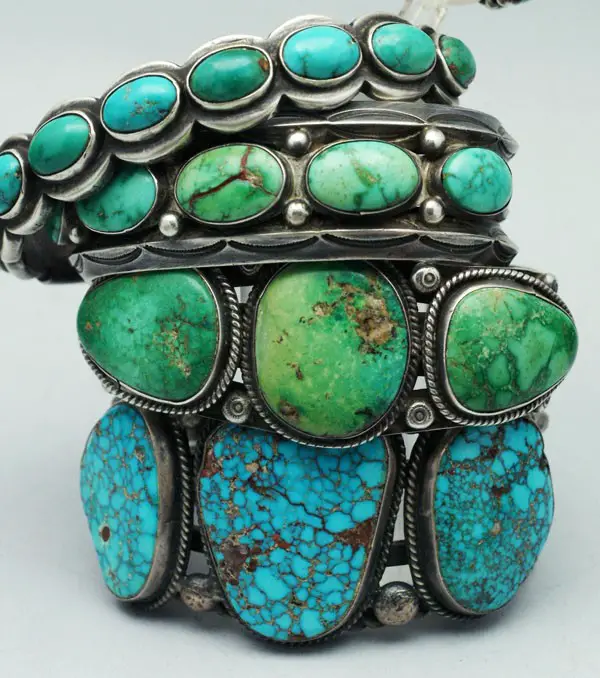
30. What did Native Americans Wear – Native American Clothing
- The clothes of Native American women usually comprised of leggings and skirts along with tunics or shirts.
- Long buckskins were also used as a women’s dress in some tribes.
- The men, especially of regions with warm climates, wore just breech-cloths.
- In some tribes, the priests wore specific dresses like regalia that were forbidden for common people.
- Native Americans also wear war bonnets and masks as a key part of their clothing at cultural dances and religious rituals.

31. Native American Headdress
- Warbonnet is the most famous headdress for men warriors and chiefs.
- Roach Headdress or Porcupine Roach is worn by men dancers and warriors.
- Horned Warbonnet or Buffalo Headdress is a sacred type of regalia worn by only men warriors.
- Feather Headband is worn by both men and women for its beauty.
- Basket Hats are decorative hats worn by only women in some tribes, and by both men and women in others.
- Otter Fur Turbans or Otter Skin Caps are formal ceremonial headdresses for men with high symbolic importance.
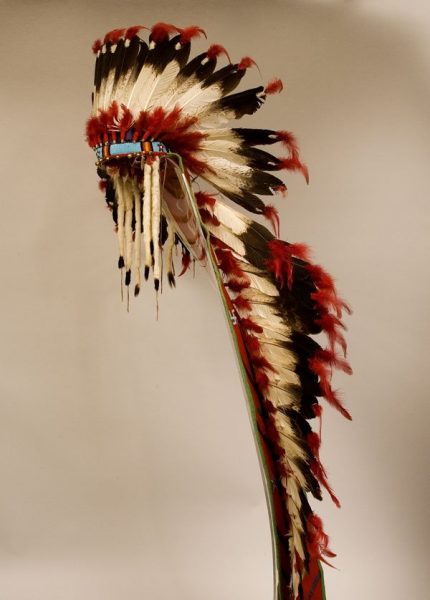
32. What did Native Americans Live In – Native American Houses
- Different Native American tribes had built different types of houses according to their climate and lifestyle.
- Some of them were temporary portable houses while some were permanent.
- Wigwam was a portable house type of Algonquian groups, they used to live during the harvesting and growing seasons.
- Teepees were portable houses made by the plain Indians.
- Plank Houses were built by the Pacific Northwestern tribes of Native Americans.
- Kiich Houses were permanent-type houses built by the Serrano and Yuma tribes in California.
- Hogans were permanent houses built by the Navajo tribe of the Southwest.
33. What did Native Americans Eat – Native American Foods
- Corn or maize, beans, and squash are considered the heart of the Native American’s diet.
- It is believed that cuisines of the United States have roots in the foods of indigenous people, like cornbread, blueberry, cranberry, mush, turkey, and hominy.
- Fry-bread is a routinely eaten Native American food.
- Cornbread and succotash are also popular Native American foods.
- Other dishes are Acorn mush, Akutaq, Bannock, Bird brain stew, Buffalo stew, Pueblo bread, salted salmon, Tiswin, Wojape, etc.
34. Native American Reservations Today
- A reservation is an area of land that a federally recognized Native American tribe legally designate and control under the US Bureau of Indian Affairs (BIA).
- There are 326 reservations in the US while the tribes are 567.
- Some tribes hold no reservations, some have many, while others share their reservations.
- The geographical area of all reservations is collectively 227,000 km square.
- Nowadays, most Native Americans prefer to live in larger western cities rather than reservations.
